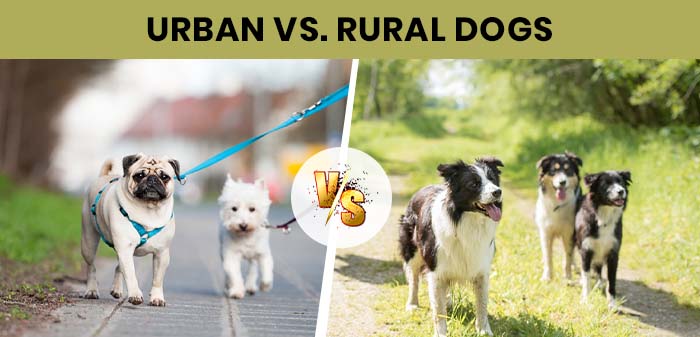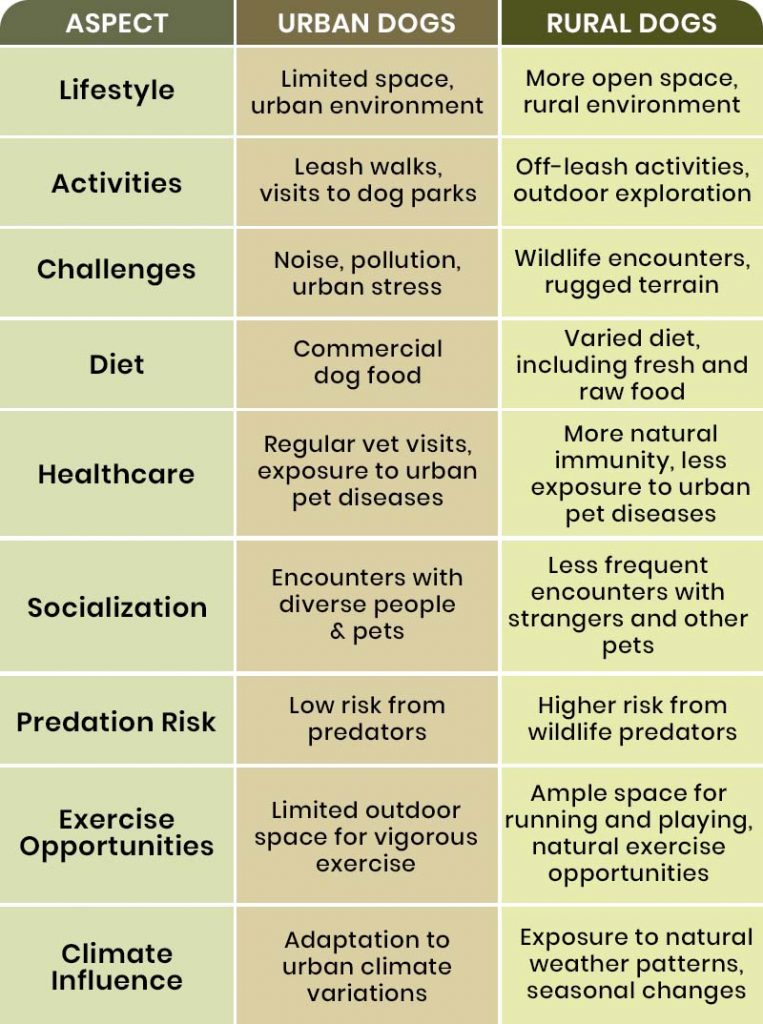Contrasting Lives of Urban and Rural Dogs

Urban vs. Rural Dogs
Dogs are known as man’s best friend, and they adapt to various environments, including urban and rural settings. However, the lives of urban and rural dogs differ significantly due to their surroundings, activities, and challenges. Urban dogs often experience a more structured routine, with regular walks around the neighborhood and visits to local parks. They may also have access to dog-friendly establishments and services, such as grooming salons and daycare facilities.
On the other hand, rural dogs often have more space to roam and explore, engaging in activities like running through fields, swimming in ponds, and even assisting with farm work. Their diet may also vary, with urban dogs often relying on commercial pet food and rural dogs accessing a more diverse range of natural foods, including fresh meat and vegetables. Despite these differences, both urban and rural dogs provide companionship and joy to their human counterparts in their unique ways.
In this blog, we will explore the distinct lifestyles of urban vs. rural dogs, including their activities, challenges, diet, and more.
Lifestyle
Urban dogs typically live in densely populated areas with limited open spaces. They often reside in apartments or houses with small yards. In contrast, rural dogs enjoy more open spaces, such as farms, countryside, or small towns, where they have access to large outdoor areas to roam and explore. The urban environment can be stimulating for dogs, with various sights, sounds, and smells, while rural dogs have the freedom to enjoy the tranquility and natural beauty of the countryside.
Activities
Urban dogs may have limited opportunities for off-leash activities and may rely on walks in the neighborhood or visits to dog parks for exercise. On the other hand, rural dogs have the freedom to roam and engage in activities such as running through fields, swimming in ponds, and even herding livestock. This difference in activities can significantly impact dogs’ physical and mental stimulation in these different environments.
Challenges
Urban dogs face challenges related to noise, pollution, and a higher likelihood of encountering unfamiliar dogs and people. They may also experience stress due to the hustle and bustle of city life. Rural dogs, on the other hand, may encounter wildlife, such as coyotes or snakes, and have to navigate through rugged terrain. Understanding these challenges is crucial for providing appropriate training and safety measures for dogs in both settings.
Diet
The diet of urban dogs may be more regulated and consist of commercial dog food, with limited access to natural or raw food sources. Rural dogs, however, may have a more varied diet, including fresh meat, vegetables, and occasional foraged food. This difference in diet reflects the availability of resources and the impact of natural surroundings on the nutritional intake of dogs.
Awesome Blog to Watch Out For: Best Guard Dogs For Families in 2023
Comparison Chart: Urban Vs. Rural Dogs
Here’s a comparison table highlighting the differences between urban and rural dogs:

Bottom Line
The urban and rural dog experiences are as contrasting as day and night. Where the urban dog thrives on social interactions and the buzz of city life, the rural dog revels in the expansive freedom and the rhythm of nature. Each has its challenges, and joys, shaped by their environment.
With the unique experiences shaped by their environments, urban dogs navigate through city life with its limitations and challenges, while rural dogs enjoy the freedom and natural surroundings of the countryside. Understanding these differences can help dog parents provide the best possible care and environment for their furry companions, ensuring a happy and healthy life for dogs, regardless of their living environment.

